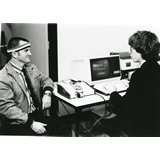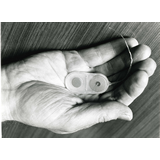Corporate Body
Royal Victorian Eye and Ear Hospital (1863 - )
- From
- 1863
- Functions
- Hospitals or Clinics
- Alternative Names
- Eye and Ear Infirmary (Former name)
- Melbourne Institute for Diseases of the Eye and Ear (Former name)
- Website
- http://www.eyeandear.org.au/
Summary
The Royal Victorian Eye and Ear Hospital opened in 1863 as the Eye and Ear Infirmary. In 2013, it celebrated 150 years as Australia's only specialist eye, ear, nose and throat hospital.
Related entries
Archival resources
National Film and Sound Archive of Australia
- Graeme Clark/bionic ear collection [National Film and Sound Archive of Australia], 1956 - 2009; National Film and Sound Archive of Australia. Details
The University of Melbourne Archives
- Department of Otolaryngology - Bionic Ear Records, 1949 - 2000, 2004.0043 at U77/46-55; The University of Melbourne Archives. Details
Published resources
Resources
- Wikidata, http://www.wikidata.org/entity/Q16899492. Details
- VIAF - Virtual International Authority File, OCLC, https://viaf.org/viaf/144750888. Details
- The Royal Victorian Eye and Ear Hospital, The Royal Victorian Eye and Ear Hospital, 2011, http://www.eyeandear.org.au/. Details
- Trove, National Library of Australia, 2009, https://nla.gov.au/nla.party-474985. Details
See also
- Dyason, D., 'The medical profession in colonial Victoria, 1834 - 1901' in Disease, Medicine and Empire: Perspectives on Western Medicine and the Experience of European Expansion, Macleod, Roy and Lewis, Milton, eds (London: Routledge, 1988), pp. 194-216. Details
Digital resources

- Title
- Audiologist Richard Dowell tests first Cochlear patient Graham Carrick
- Type
- Image
- Date
- 1982
- Source
- Graeme Clark
Jack Roberts
Created: 5 September 2016, Last modified: 10 January 2023

